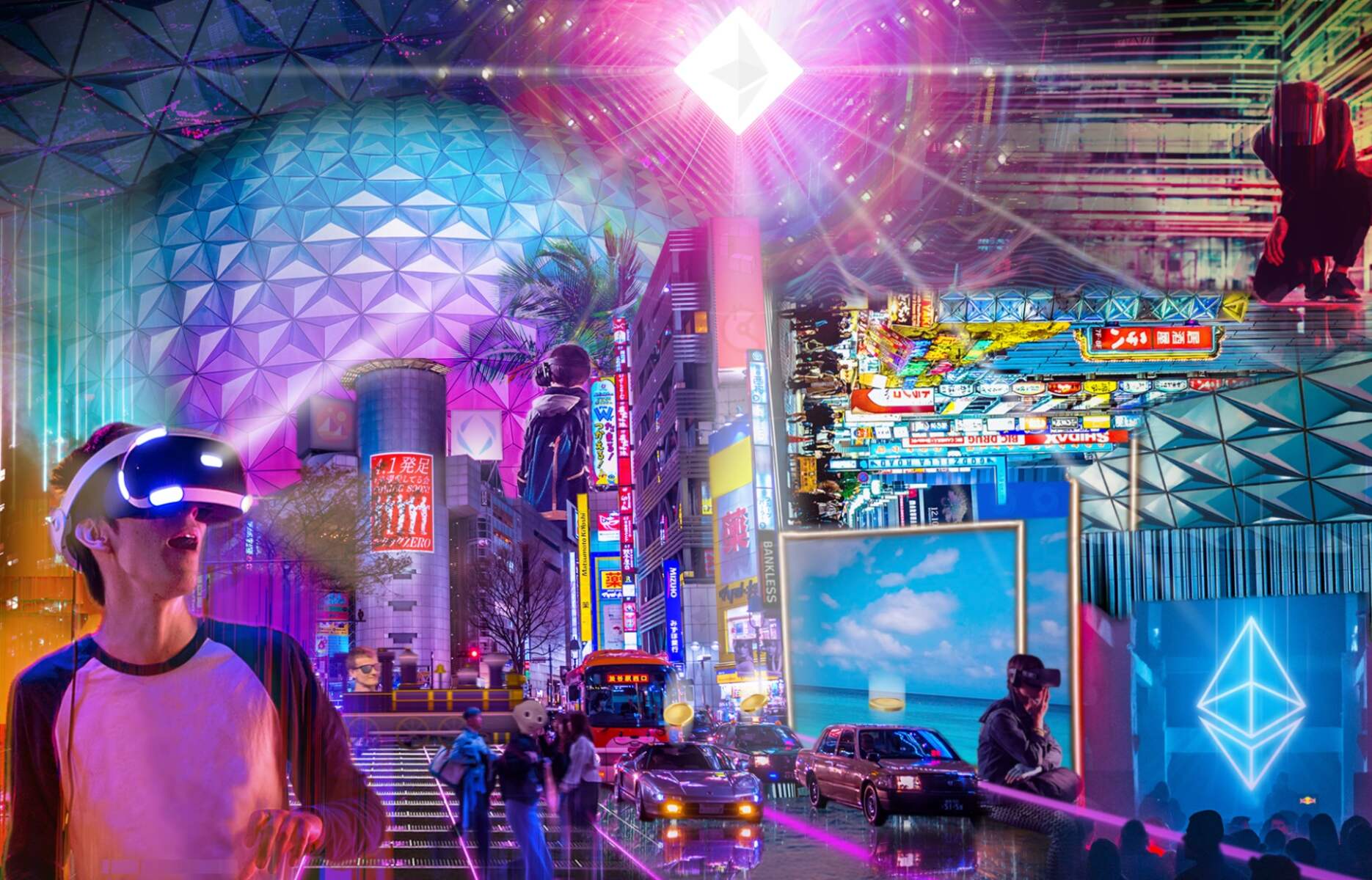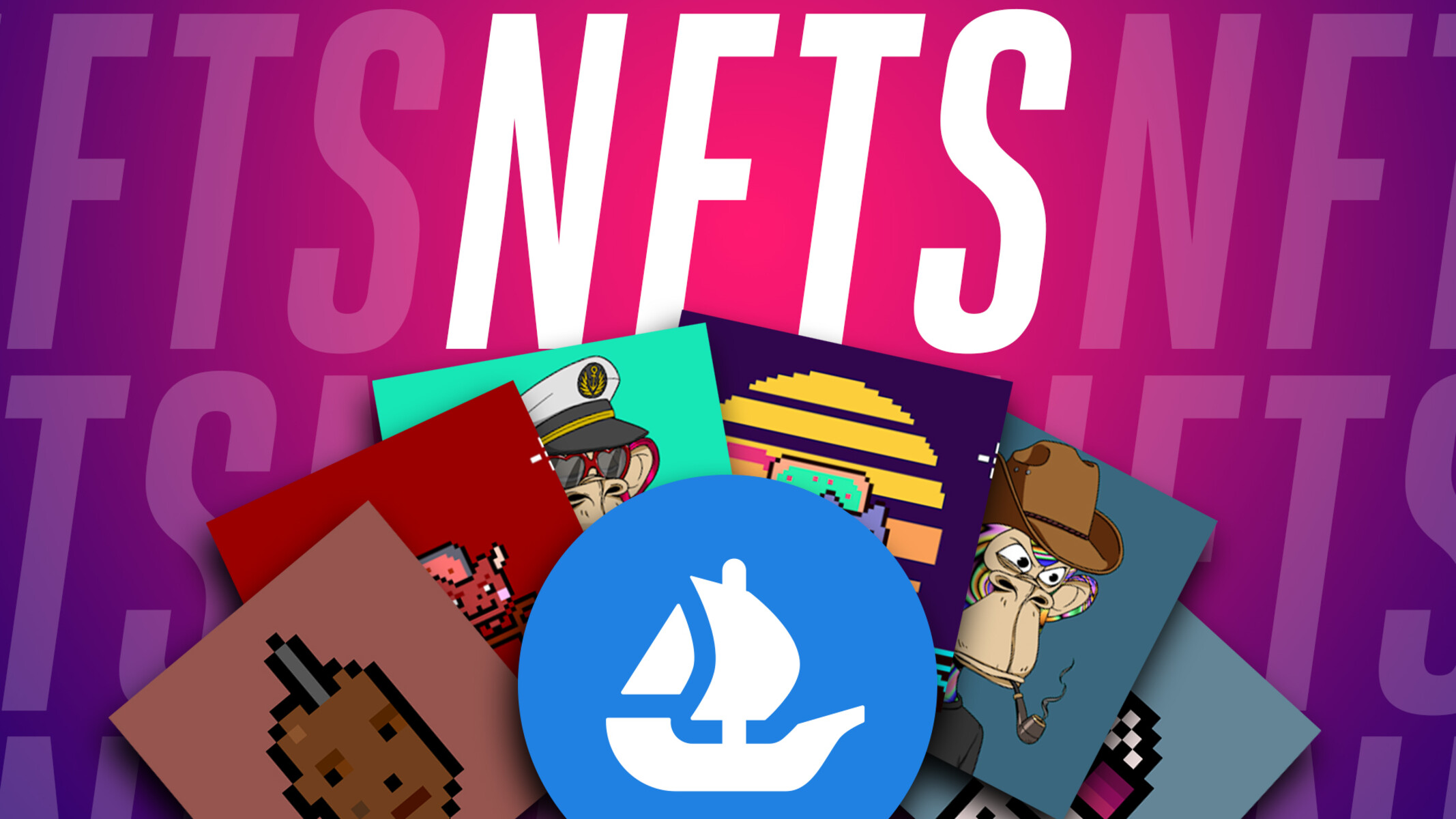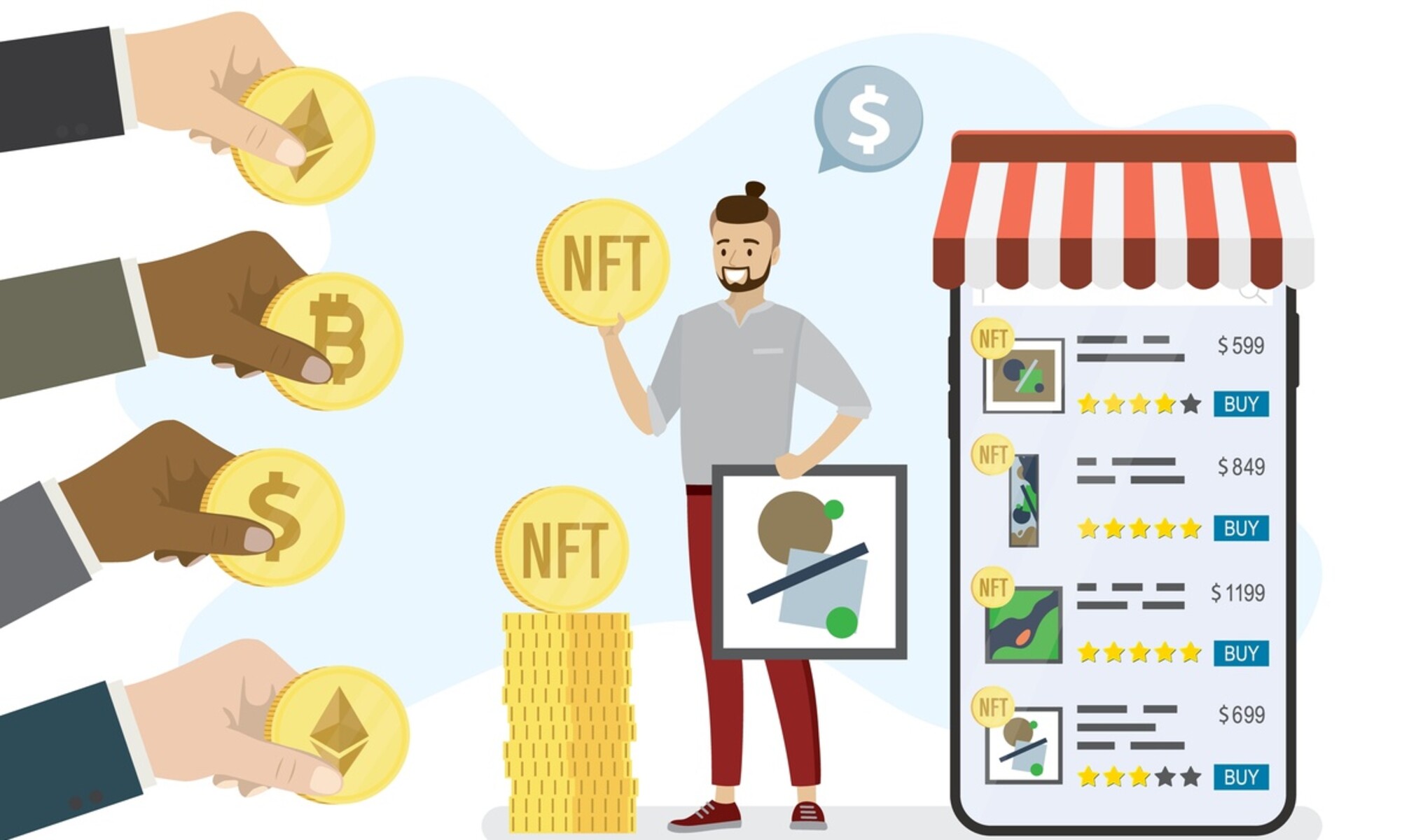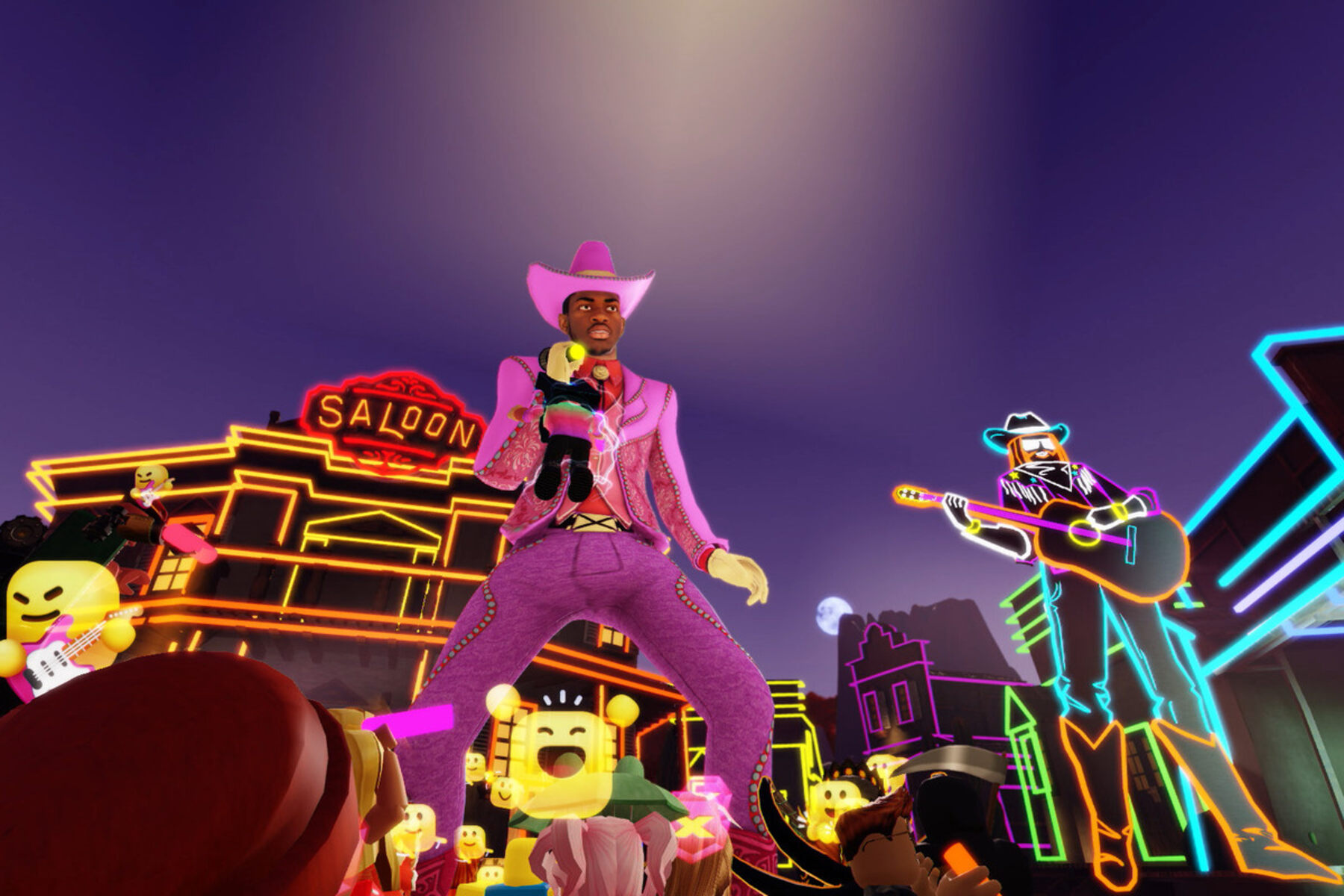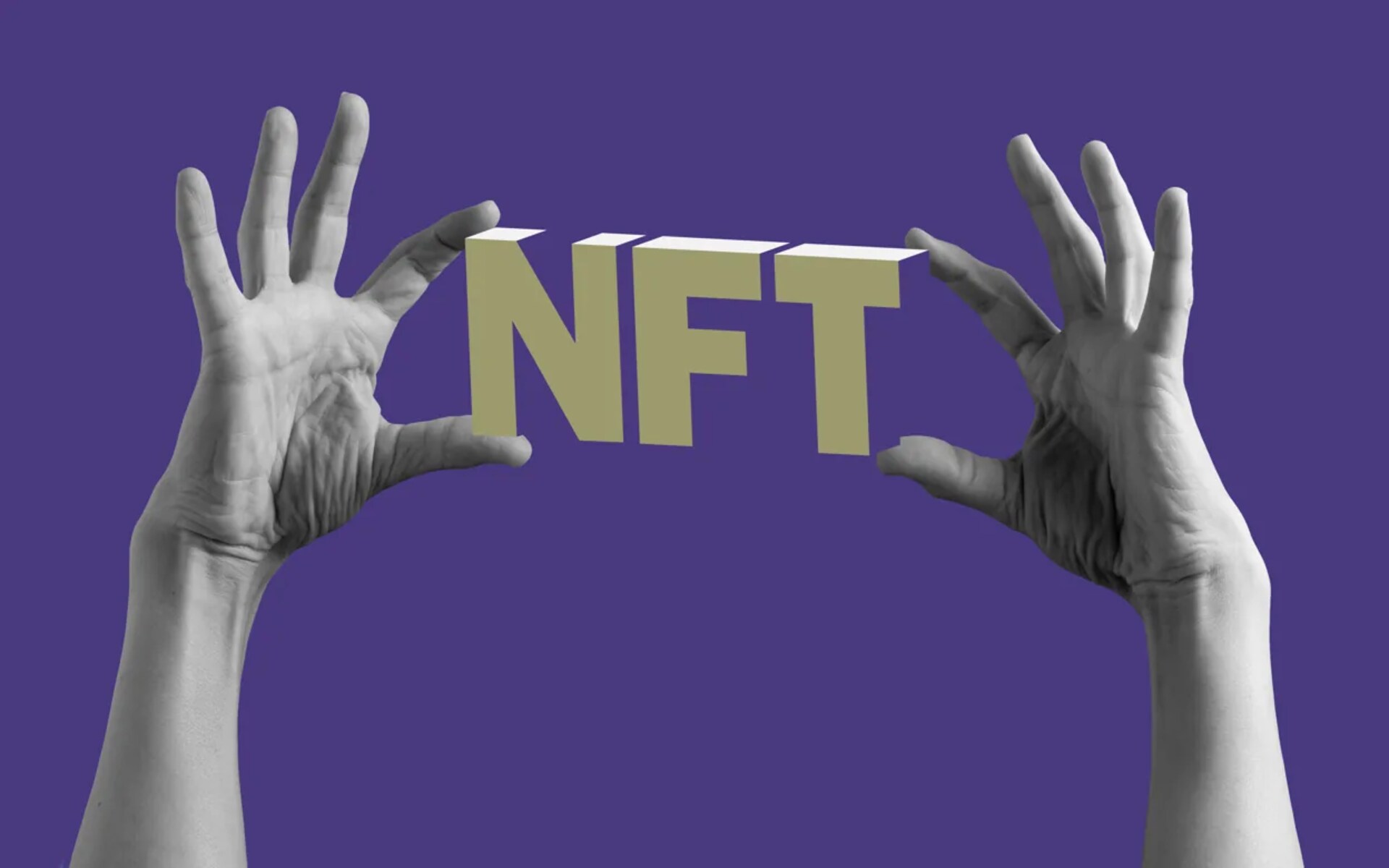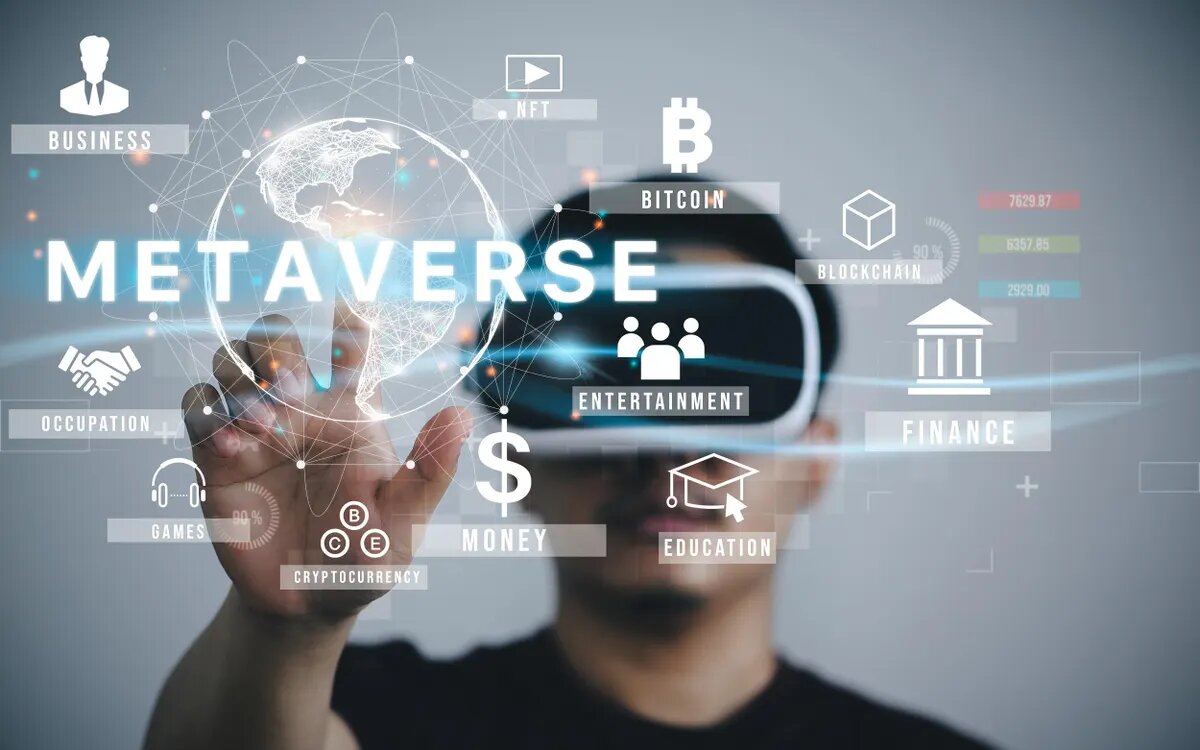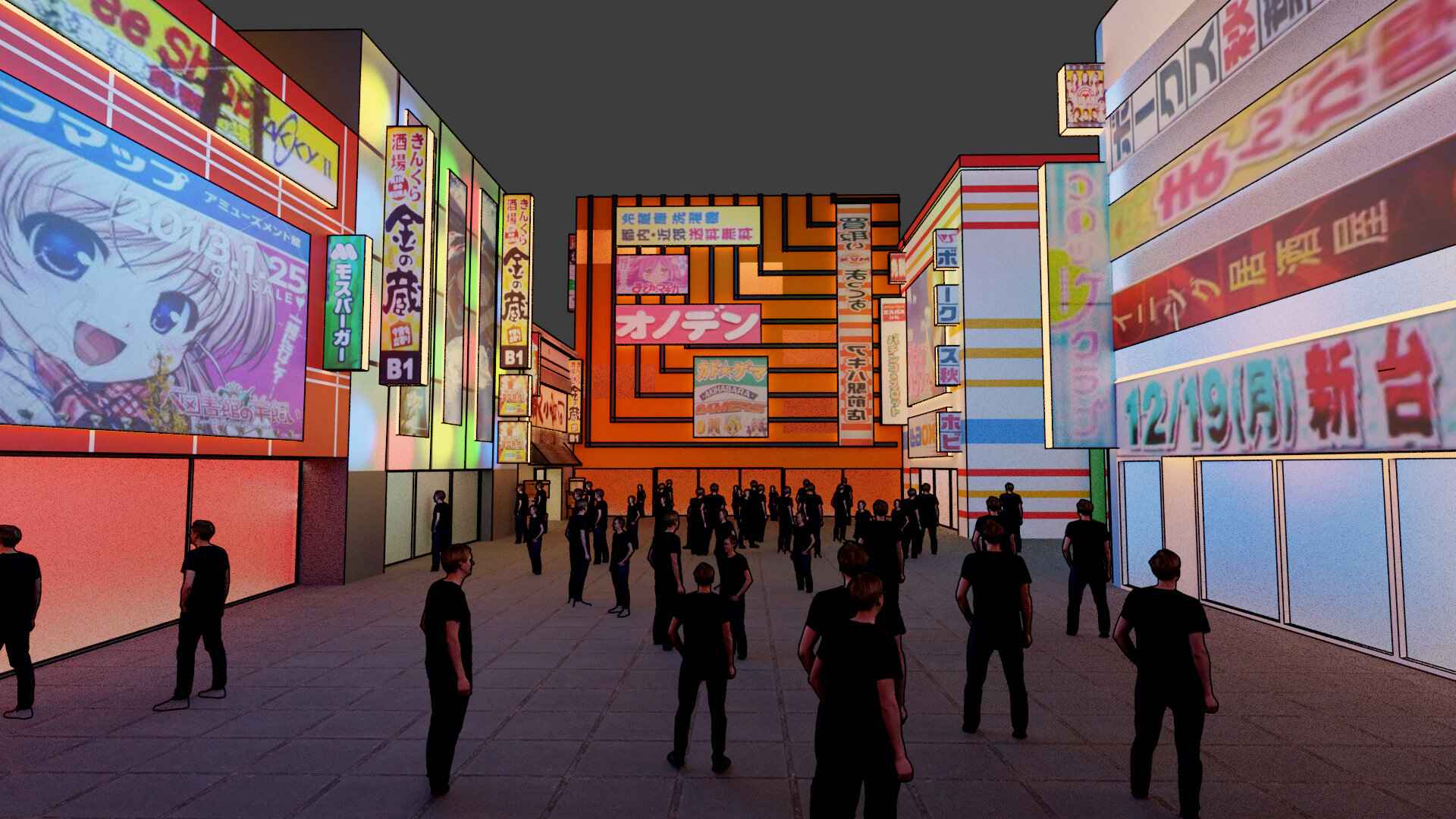Introduction
The world of technology is constantly evolving, and with each advancement comes new opportunities for innovation. One such innovation that has gained significant traction in recent years is Non-Fungible Tokens (NFTs), leading to the emergence of the Metaverse. In this article, we will explore the concept of NFTs and the Metaverse, discussing their intersection and the potential they hold for the future.
NFTs, which stand for Non-Fungible Tokens, have transformed the way we perceive and exchange digital assets. Unlike cryptocurrencies such as Bitcoin or Ethereum, which are interchangeable and have equal value, NFTs are unique and indivisible. Each NFT is a digital representation of a specific item or piece of content, such as artwork, music, videos, virtual real estate, and even virtual fashion. These tokens are stored on blockchain technology, providing proof of ownership and authenticity.
The Metaverse, on the other hand, refers to a virtual reality space where people can interact, transact, and engage with one another and digital assets in a three-dimensional, immersive environment. It offers a shared, virtual space where users can explore, create, and experience a multitude of digital possibilities. The concept of the Metaverse has been popularized by movies like “The Matrix” and books like “Snow Crash” and has now become a tangible reality with the advancement of technology and the increasing adoption of NFTs.
The convergence of NFTs and the Metaverse opens up a plethora of exciting opportunities. NFTs can be utilized within the Metaverse to establish ownership and scarcity of digital assets, enabling artists and creators to monetize their work in new ways. For example, owning an NFT of a virtual artwork allows collectors to display it in their virtual homes or galleries within the Metaverse, creating a unique and immersive digital art experience.
Beyond art, NFTs also have applications in gaming, fashion, and virtual real estate within the Metaverse. Gamers can purchase and trade NFT-based in-game assets, such as characters, weapons, or skins, enhancing their gaming experiences and providing a new revenue stream for game developers. Similarly, fashion enthusiasts can explore virtual fashion brands and purchase NFT-based clothing items to express their unique style and individuality in the Metaverse.
Moreover, the Metaverse and NFTs present an unprecedented opportunity for businesses and brands to engage with their audience in innovative ways. Companies can use NFTs to create limited edition digital collectibles or rewards, providing exclusive experiences and incentives for their customers.
While the potential of NFTs in the Metaverse is immense, there are also challenges and considerations. Scalability, accessibility, and environmental impact are some of the concerns that need to be addressed. Furthermore, the issue of copyright infringement and intellectual property rights in the digital space will require careful navigation and legal frameworks.
In the next sections of this article, we will delve deeper into the benefits, challenges, and leading projects in the NFT Metaverse landscape. Let’s explore how NFTs and the Metaverse are reshaping the digital world and creating exciting opportunities for creators, users, and businesses alike.
What is NFT?
Non-Fungible Tokens (NFTs) have taken the digital world by storm, revolutionizing the way we value and exchange digital assets. In simple terms, an NFT is a unique token that represents ownership of a specific item or piece of content, such as artwork, music, videos, virtual real estate, or even virtual fashion. Unlike cryptocurrencies like Bitcoin or Ethereum, which are fungible and interchangeable, NFTs are indivisible and possess distinct characteristics that make each one unique.
The uniqueness of NFTs is made possible through blockchain technology, the underlying foundation that provides transparency, security, and immutability. Each NFT is stored and verified on a blockchain, ensuring the authenticity and ownership of the digital asset it represents. This means that artists, creators, and buyers can have confidence in the provenance and value of NFTs.
One of the key features of NFTs is their ability to establish scarcity and exclusivity. Unlike the digital world where content can be easily copied and shared, NFTs provide a way to verify and limit the availability of a particular item or piece of content. This scarcity not only adds value to the NFT but also allows artists and content creators to monetize their work in new and innovative ways.
The market for NFTs has grown exponentially, attracting artists, musicians, celebrities, and collectors from around the globe. Artists can create digital artworks and sell them as NFTs, allowing them to directly connect with their audience and receive royalties for each subsequent sale of their work. Musicians can release limited edition albums or songs as NFTs, providing exclusive content and experiences to their fans.
But NFTs aren’t limited to the realm of art and music. They have expanded into various industries and sectors, including gaming, fashion, and virtual real estate. In the gaming world, NFTs enable players to own and trade in-game assets, such as characters, weapons, or virtual land, enhancing the gaming experience and fostering a new economy within virtual worlds.
Similarly, in the fashion industry, NFTs have opened up a new dimension of virtual fashion, where users can dress up their avatars with unique and limited edition virtual items. Virtual fashion brands have emerged, allowing users to express their individuality and style in the digital realm.
NFTs also offer opportunities in the world of virtual real estate, where users can own and trade virtual land and properties within virtual worlds like Decentraland or Cryptovoxels. These virtual lands can be developed, monetized, and even host virtual events, creating a vibrant and dynamic digital community.
While the NFT market has experienced extraordinary growth, it is still a relatively new and evolving space. As with any burgeoning industry, there are challenges to overcome, including concerns over environmental impact, scalability, and regulations. However, the potential for NFTs to reshape the way we perceive and value digital assets is undeniable, opening up new opportunities for creators, collectors, and businesses.
In the next sections, we will explore the concept of the Metaverse and how NFTs intersect within this digital universe. Join us as we delve into the exciting world of the NFT Metaverse and uncover the endless possibilities it presents.
What is the Metaverse?
The Metaverse is a concept that has captured the imagination of technology enthusiasts and futurists alike. Coined in science fiction novels and popularized by movies like “The Matrix” and “Ready Player One,” the Metaverse refers to a virtual reality space where people can interact, transact, and engage with one another and digital assets in a three-dimensional, immersive environment.
Imagine a virtual world where you can walk, explore, and interact with other users in real-time, regardless of their physical location. In the Metaverse, users can create avatars to represent themselves, attend virtual events, socialize, shop, play games, and even conduct business. It’s a shared digital universe that mirrors elements of the physical world while also offering unlimited possibilities and experiences.
The Metaverse is not just a concept limited to entertainment and gaming, but it has the potential to impact various aspects of our lives. From education to healthcare, from commerce to social interactions, the Metaverse holds the promise of revolutionizing the way we live, work, and play.
One of the defining characteristics of the Metaverse is its immersive nature. By utilizing virtual reality (VR) and augmented reality (AR) technologies, users can have a sense of presence and interaction within the digital realm. This immersion creates a more engaging and realistic experience, blurring the boundaries between the physical and digital worlds.
Within the Metaverse, digital assets play a crucial role. These assets can include anything from virtual real estate, artwork, clothing, music, games, and much more. Digital assets can be bought, sold, traded, and even used as a form of self-expression. The ownership of these assets is often represented by NFTs, providing proof of authenticity, uniqueness, and ownership.
Furthermore, the Metaverse is not just a single, centralized platform but rather a collection of interconnected virtual worlds and experiences. Different platforms and ecosystems contribute to the overall Metaverse, allowing users to seamlessly transition between various virtual environments while retaining their digital identity and assets.
Of course, the development of the Metaverse is an ongoing process, and there are still challenges to overcome. Technical barriers, such as network infrastructure, processing power, and hardware accessibility, need to be addressed to ensure a smooth and immersive experience for users. Additionally, considerations around privacy, security, and governance will be vital in shaping the ethical and responsible use of the Metaverse.
However, with the advancement of technology and the growing interest in virtual experiences, the Metaverse is inching closer to becoming a widespread reality. Its potential to revolutionize industries, foster global collaboration, and redefine social interactions is immense. The integration of NFTs within the Metaverse adds an extra layer of value and monetization possibilities, making it an even more exciting and dynamic space.
In the following sections, we will delve deeper into how NFTs and the Metaverse intersect and explore the benefits, challenges, and opportunities that arise from this convergence. Strap on your virtual reality goggles and join us on this journey into the captivating world of the NFT Metaverse.
NFTs in the Metaverse
The Metaverse and Non-Fungible Tokens (NFTs) are two rapidly expanding digital phenomena that intersect and complement each other. NFTs have become an integral part of the Metaverse, providing a mechanism for creators, users, and businesses to establish ownership, scarcity, and value for digital assets within the immersive virtual worlds of the Metaverse.
NFTs play a crucial role in the Metaverse by enabling users to own and trade unique, digital items and experiences. These items can range from virtual real estate and artwork to fashion items, in-game assets, and even virtual collectibles. By utilizing NFTs in the Metaverse, creators can monetize their work, users can express their individuality, and businesses can engage with their audience in new and innovative ways.
One of the key advantages of NFTs in the Metaverse is the ability to establish ownership and provenance of digital assets. With NFTs, artists and creators can tokenize their creations, ensuring that each piece of digital content has a unique identifier and is verifiably scarce. This creates a sense of authenticity and value for users, which can be further enhanced by limited editions or special editions of NFTs.
Within the Metaverse, NFTs offer a new dimension of self-expression and customization. Users can personalize their avatars, virtual homes, and digital environments by owning and displaying NFTs. Whether it’s wearing a limited edition virtual fashion item to showcase their style or decorating their virtual homes with rare artwork, NFTs allow users to curate their own digital identity and create unique virtual experiences.
Gaming in the Metaverse is another area where NFTs have found significant traction. By tokenizing in-game assets like characters, weapons, and virtual land as NFTs, players have the ability to truly own and trade these items both within and across different virtual worlds. This fosters a dynamic economy where gamers can buy, sell, and trade valuable NFT-based assets, enhancing their gaming experiences and providing opportunities for developers to create new revenue streams.
Furthermore, NFTs in the Metaverse create new opportunities for businesses and brands to engage with their audience. Companies can leverage NFTs to release limited edition digital collectibles, exclusive virtual experiences, or rewards for their customers. This not only enhances the value proposition for consumers but also provides a unique marketing and branding opportunity for companies looking to reach and connect with their target audience within the immersive world of the Metaverse.
However, it’s important to note that the integration of NFTs in the Metaverse is not without challenges. Scalability, sustainability, and interoperability are some of the key considerations that need to be addressed. As the popularity of NFTs continues to grow, ensuring seamless transactions and interoperability between different platforms and virtual worlds will be crucial for the future of the NFT Metaverse.
In the next sections, we will delve deeper into the diverse benefits and opportunities that the NFT Metaverse presents. From monetization for creators to immersive experiences for users and innovative marketing strategies for businesses, the intersection of NFTs and the Metaverse is reshaping the digital landscape and creating a world of endless possibilities.
Benefits and Opportunities of NFT Metaverse
The combination of Non-Fungible Tokens (NFTs) and the Metaverse presents a multitude of benefits and opportunities that are revolutionizing the way we interact with digital assets, engage with virtual worlds, and conduct business. Let’s explore some of the key benefits and opportunities of the NFT Metaverse:
1. Monetization for Creators: NFTs provide artists, musicians, and content creators with unique opportunities to monetize their work. By tokenizing their creations as NFTs, they can sell digital assets directly to their audience, receive royalties for secondary sales, and establish scarcity and value for their creations within the immersive Metaverse.
2. Ownership and Authenticity: NFTs enable users to establish ownership and authenticity of digital assets within the Metaverse. By utilizing blockchain technology, NFTs provide a transparent and immutable record of ownership, ensuring that users can prove the authenticity and uniqueness of their digital assets.
3. Virtual Fashion and Self-Expression: Within the NFT Metaverse, users can express themselves through virtual fashion. NFT-based clothing items and accessories allow users to customize their avatars and stand out in the virtual world, creating a unique and personalized virtual identity.
4. Enhanced Gaming Experiences: NFTs have revolutionized the gaming industry within the Metaverse. By tokenizing in-game assets as NFTs, players can truly own, trade, and monetize their virtual possessions. This enhances gaming experiences, fosters interactive economies, and provides opportunities for developers to create new revenue streams.
5. Brand Engagement and Marketing: Businesses and brands can leverage the NFT Metaverse to engage with their audience in innovative ways. By releasing limited edition digital collectibles or offering exclusive virtual experiences, companies can create a unique marketing and branding opportunity, fostering a deeper connection with consumers within the immersive world of the Metaverse.
6. Virtual Real Estate Investment: NFTs in the Metaverse have opened up a new frontier for virtual real estate investment. Users can purchase, trade, and develop virtual land and properties within the Metaverse, creating opportunities for virtual real estate marketplaces and the potential for significant returns on investment.
7. Global Collaboration and Access: The NFT Metaverse provides a platform for global collaboration and access. Users from all over the world can connect, interact, and collaborate within virtual worlds, transcending geographical limitations and fostering a sense of community on a global scale.
8. Creative and Entrepreneurial Opportunities: The NFT Metaverse offers a wealth of creative and entrepreneurial opportunities. Artists, developers, and creators can explore new avenues for collaboration, innovation, and entrepreneurship, leveraging NFTs and the Metaverse to showcase their skills and monetize their creations.
9. Cultural Preservation and Heritage: NFTs in the Metaverse have the potential to preserve and promote cultural heritage. By tokenizing cultural artifacts, artworks, and historical items as NFTs, communities can digitally preserve and showcase their cultural heritage, making it accessible to a global audience within the immersive Metaverse.
As the NFT Metaverse continues to evolve, these benefits and opportunities will grow, shaping the way we create, consume, and interact with digital content. However, it is crucial to address the challenges and considerations that come with this newfound territory. In the following sections, we will explore some of the challenges and leading projects within the NFT Metaverse landscape.
Challenges and Considerations of NFT Metaverse
While the NFT Metaverse offers exciting opportunities, there are also several challenges and considerations that need to be addressed. Let’s explore some of the key challenges and considerations associated with the NFT Metaverse:
1. Scalability: As the popularity of NFTs and the Metaverse continues to grow, scalability becomes a significant concern. The current blockchain infrastructure may face limitations in handling the increasing volume of transactions and interactions within virtual worlds. Addressing scalability issues will be crucial to ensure a smooth and seamless experience for users.
2. Accessibility: Ensuring accessibility to the NFT Metaverse is vital for its widespread adoption. Making it accessible to people from different geographical locations, socio-economic backgrounds, and with varying levels of technical literacy will be crucial. Improving user interfaces, reducing entry barriers, and developing user-friendly platforms will play a crucial role in achieving broader accessibility.
3. Environmental Impact: The environmental impact of blockchain technology, especially in relation to energy consumption, is a significant concern. As the demand for NFTs grows, there is a need to explore and implement more sustainable solutions. Utilizing alternative consensus mechanisms, such as proof-of-stake, and promoting energy-efficient practices can help mitigate the environmental impact of the NFT Metaverse.
4. Intellectual Property and Copyright: The NFT Metaverse raises complex questions surrounding intellectual property rights and copyright infringement. Ensuring that creators are protected and compensated for their work, while also respecting the rights of others, will require careful navigation and the establishment of legal frameworks. Addressing these issues will be crucial to foster a fair and sustainable ecosystem within the NFT Metaverse.
5. Interoperability: The NFT Metaverse comprises multiple platforms, virtual worlds, and ecosystems. Ensuring interoperability between these different environments is essential to create a seamless experience and enable the movement of assets and identities across various platforms. Building standards and protocols that allow for interoperability between different NFT marketplaces and virtual worlds will be vital.
6. Security and Fraud: The decentralized nature of blockchain technology carries both advantages and risks. Ensuring the security of NFT transactions, protecting user identities, and guarding against fraud and hacking attempts are crucial considerations. Implementing robust security measures, educating users about best practices, and fostering community-driven security initiatives will be necessary to build trust within the NFT Metaverse.
7. Ethical and Responsible Use: With the immersive nature of the NFT Metaverse, ethical and responsible use becomes paramount. Issues such as virtual harassment, toxic behavior, and digital rights abuse need to be addressed to ensure a safe and inclusive virtual environment. Establishing community guidelines, implementing moderation mechanisms, and fostering a culture of respect and inclusivity will be essential for the long-term success of the NFT Metaverse.
8. Regulatory Frameworks: As the NFT Metaverse gains prominence, regulatory frameworks will play a crucial role in ensuring fair practices, consumer protection, and compliance with existing laws. Governments and regulatory bodies will need to collaborate with industry stakeholders to develop appropriate regulations that balance innovation, user protection, and privacy within the NFT Metaverse.
By addressing these challenges and considerations, the NFT Metaverse can evolve into a more sustainable, inclusive, and vibrant space. Leading projects and industry stakeholders are already working towards overcoming these challenges and driving innovation within the NFT Metaverse, opening up new possibilities and pushing the boundaries of digital creativity and interaction.
Leading Projects in the NFT Metaverse
The NFT Metaverse is a rapidly evolving ecosystem with numerous projects aiming to push the boundaries of digital creativity, collaboration, and ownership. Let’s explore some of the leading projects that are shaping the NFT Metaverse landscape:
1. Decentraland: Decentraland is a virtual reality platform built on the Ethereum blockchain. It allows users to own and develop virtual land, create and monetize content, and engage with others in a decentralized virtual world. Decentraland hosts a thriving marketplace where users can buy, sell, and trade NFT-based assets including virtual real estate, artwork, and wearables.
2. Cryptovoxels: Cryptovoxels is a decentralized virtual world built on the Ethereum blockchain. It features voxel-based graphics and allows users to build, explore, and trade in virtual spaces. Users can buy and sell virtual land, create and showcase artwork, and socialize with others. Cryptovoxels leverages NFTs to establish ownership and scarcity of virtual parcels and items within its platform.
3. The Sandbox: The Sandbox is a community-driven, decentralized virtual world where users can create, play, and monetize their own interactive experiences. It offers a user-friendly platform for designing and publishing games, experiences, and virtual assets using NFTs. Users can buy, sell, and trade NFT-based LAND, which represents virtual land within the Sandbox world.
4. Axie Infinity: Axie Infinity is a blockchain-based game that allows players to collect, breed, raise, and battle fantasy creatures called Axies. Each Axie is an NFT and can be bought, sold, and traded on various marketplaces. The game combines elements of battling, breeding, and resource management, creating a vibrant in-game economy where players can earn rewards and monetize their gameplay.
5. NBA Top Shot: NBA Top Shot is an officially licensed blockchain-based platform that allows fans to buy, sell, and trade digital collectibles in the form of video clips highlighting NBA moments. Each moment is tokenized as an NFT, providing scarcity and value to these digital assets. NBA Top Shot has gained significant popularity, attracting both sports enthusiasts and collectors to the world of NFT-based sports memorabilia.
6. Somnium Space: Somnium Space is an open and persistent virtual reality world where users can create, explore, and trade in a decentralized manner. Users can buy and own virtual land, customize their avatars, and interact with other users in real-time. NFT-based assets, including artwork, wearables, and virtual real estate, are an integral part of the Somnium Space ecosystem.
7. Rarible: Rarible is a decentralized NFT marketplace where users can create, buy, sell, and trade digital collectibles, artwork, and virtual assets. It allows creators to mint their own NFTs and customize royalty fees, providing artists with greater control and revenue potential. Rarible is known for its community-driven approach, giving users a voice in the platform’s governance and development.
8. SuperRare: SuperRare is a curated digital art marketplace where artists can tokenize and sell their artwork as NFTs. Each artwork on SuperRare is unique, limited edition, and truly owned by the buyer as an NFT. By leveraging blockchain technology, SuperRare provides a platform for artists to showcase their digital art and collectors to build valuable digital art collections.
These projects represent just a glimpse of the vibrant and diverse NFT Metaverse ecosystem. As innovation continues to thrive, new projects and platforms will emerge, pushing the boundaries of digital creativity, ownership, and interaction within virtual worlds. The NFT Metaverse is a dynamic space, offering opportunities for creators, users, and businesses to explore, collaborate, and redefine the digital landscape.
Conclusion
The NFT Metaverse represents a paradigm shift in the way we create, consume, and interact with digital assets. By combining the unique capabilities of Non-Fungible Tokens (NFTs) with the immersive virtual worlds of the Metaverse, a new era of digital ownership, creativity, and collaboration has emerged.
NFTs provide creators, artists, and musicians with the ability to monetize their work, establish ownership, and connect directly with their audience. The Metaverse, on the other hand, offers a virtual reality space where users can explore, engage, and transact in a three-dimensional, immersive environment.
The intersection of NFTs and the Metaverse unlocks a multitude of benefits and opportunities. Artists can tokenize their creations as NFTs and sell them directly to collectors, while gamers can truly own and trade in-game assets as NFTs, enhancing their gaming experiences and fostering interactive economies. Businesses and brands can leverage the NFT Metaverse to engage with their audience through limited edition collectibles, virtual experiences, and innovative marketing strategies.
However, this emerging landscape also presents challenges and considerations that need to be addressed. Scalability, accessibility, environmental impact, copyright infringement, and security are among the key challenges that the NFT Metaverse ecosystem must navigate.
Leading projects such as Decentraland, Cryptovoxels, Axie Infinity, and NBA Top Shot are shaping the NFT Metaverse landscape, offering immersive virtual experiences, NFT marketplaces, and interactive gaming platforms. These projects are at the forefront of pushing the boundaries of digital creativity, collaboration, and ownership within the NFT Metaverse.
As the NFT Metaverse continues to evolve, it is essential to foster accessibility, sustainability, interoperability, and responsible use. Industry stakeholders, developers, and regulators must work together to create robust frameworks, address challenges, and ensure the long-term viability of the NFT Metaverse.
In conclusion, the intersection of NFTs and the Metaverse is revolutionizing the digital landscape, creating a world where creativity, ownership, and engagement flourish. The opportunities for artists, creators, gamers, businesses, and users are vast, shaping the way we perceive and interact with digital assets. The NFT Metaverse represents a new era of digital experiences, where imagination transcends boundaries and the possibilities are limitless.







